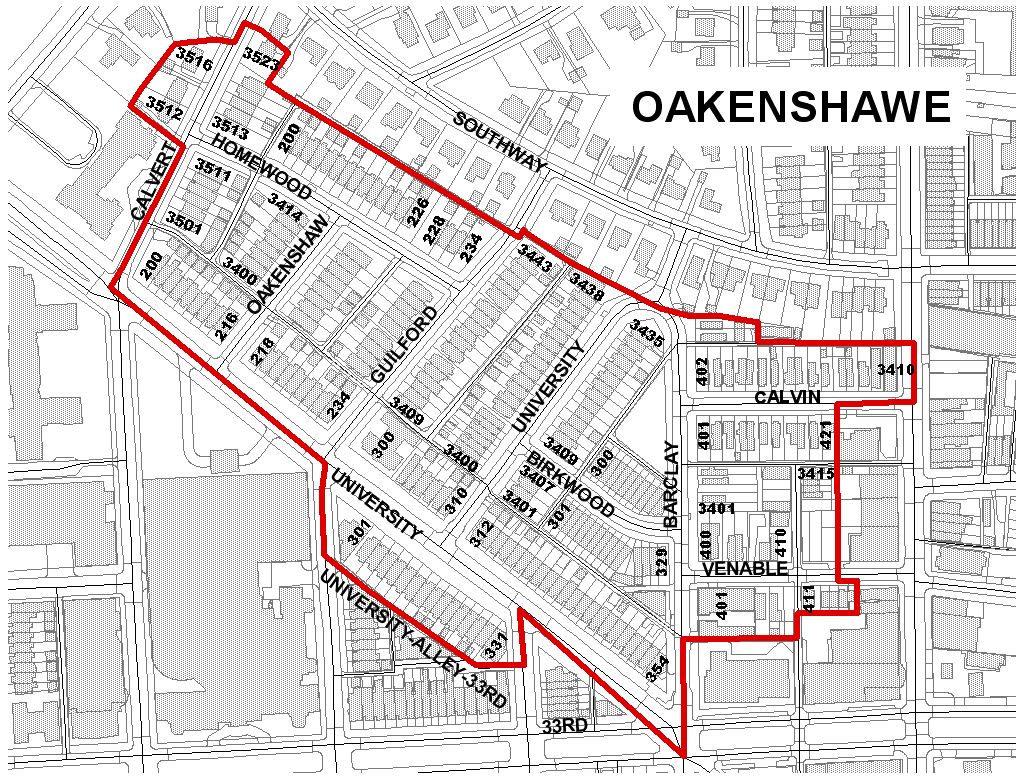Oakenshawe
National Register of Historic Places: 12/18/2003
Description
 The district is bounded in the north by parts of the Guilford Historic District. Its southern boundary on the east is north of the Boulevard Theatre and the Warerly branch of the Enoch Pratt Library. From Calvert Street to Guilford Avenue, its southern boundary is University Parkway, from Guilford Avenue to Abell Avenue its southern boundary is the alley south of the buildings on the south side of University Parkway, and from Abell Avenue to Barclay Street, its southern boundary is again University Parkway. The district is bounded on the west by Calvert Street, except that it also includes the swelling at 3512-3514 and 3516 North Calvert Street. On the east, the Oakenshawe district extends eastward to the rear of the commercial properties that face on York Road. Excluding a modern apartment building on the West Side of Calvert Street, the district's boundaries Oakenshawe Improvement Association. Though nearby commercial properties facing on York Road and 33rd Street between York and University Parkway were originally a part of the Wilson estate, they function as more as a part of Waverly and rarely excluded.
The district is bounded in the north by parts of the Guilford Historic District. Its southern boundary on the east is north of the Boulevard Theatre and the Warerly branch of the Enoch Pratt Library. From Calvert Street to Guilford Avenue, its southern boundary is University Parkway, from Guilford Avenue to Abell Avenue its southern boundary is the alley south of the buildings on the south side of University Parkway, and from Abell Avenue to Barclay Street, its southern boundary is again University Parkway. The district is bounded on the west by Calvert Street, except that it also includes the swelling at 3512-3514 and 3516 North Calvert Street. On the east, the Oakenshawe district extends eastward to the rear of the commercial properties that face on York Road. Excluding a modern apartment building on the West Side of Calvert Street, the district's boundaries Oakenshawe Improvement Association. Though nearby commercial properties facing on York Road and 33rd Street between York and University Parkway were originally a part of the Wilson estate, they function as more as a part of Waverly and rarely excluded.
Significance
Baltimore was incorporated as a city in 1797. Eventually, demands for housing that would be more luxurious than those of the central city contributed to expansion toward the north. In 1888, Baltimore City's northern boundary moved beyond North Avenue so as to include new lands that were heavily wooded and sparsely settled. In the first decade of the twentieth century, Homewood campus of the Johns Hopkins University began to be developed and shortly thereafter the Roland Park Company began to develop Guilford. Associated with these developments, adjacent properties became attractive to developers. This suburbanization was occurring in the wake of the American Beautiful Movement and the renowned landscape architectural firm of the Olmsteds.